Tetraheptylammonium bromide
Synonym(s):THPAB
- CAS NO.:4368-51-8
- Empirical Formula: C28H60BrN
- Molecular Weight: 490.69
- MDL number: MFCD00011861
- EINECS: 224-459-3
- SAFETY DATA SHEET (SDS)
- Update Date: 2025-02-12 20:55:48
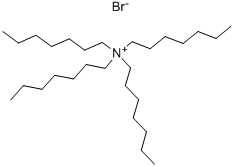
What is Tetraheptylammonium bromide?
Chemical properties
white flakes
The Uses of Tetraheptylammonium bromide
Tetraheptylammonium Bromide is a catalyst in organic polymer synthesis involving redox-active crystals of polymetalate. Reagent used in the preparation of ionic liquids as novel quartz collectors.
General Description
Tetraheptylammonium bromide is a quaternary ammonium compound (QAC) mainly used as a phase-transfer agent.
Purification Methods
Crystallise the bromide from n-hexane, then dry it in a vacuum oven at 70o. [Goodrich et al. J Am Chem Soc 72 4412 1950, Beilstein 4 IV 736.]
Properties of Tetraheptylammonium bromide
| Melting point: | 87-89 °C(lit.) |
| Density | 1.0311 (rough estimate) |
| refractive index | 1.5260 (estimate) |
| storage temp. | Inert atmosphere,Room Temperature |
| solubility | Chloroform (Slightly), DMSO (Slightly) |
| form | Flakes |
| color | White |
| Odor | Odorless |
| Water Solubility | Soluble in water and methanol. |
| Sensitive | Hygroscopic |
| λmax | λ: 240 nm Amax: 0.04 λ: 250 nm Amax: 0.03 λ: 260 nm Amax: 0.02 λ: 500 nm Amax: 0.02 |
| BRN | 3763391 |
| Stability: | Hygroscopic |
| CAS DataBase Reference | 4368-51-8(CAS DataBase Reference) |
| NIST Chemistry Reference | Tetraheptylammonium bromide(4368-51-8) |
| EPA Substance Registry System | Tetraheptylammonium bromide (4368-51-8) |
Safety information for Tetraheptylammonium bromide
| Signal word | Warning |
| Pictogram(s) |
 Exclamation Mark Irritant GHS07 |
| GHS Hazard Statements |
H315:Skin corrosion/irritation H319:Serious eye damage/eye irritation H335:Specific target organ toxicity, single exposure;Respiratory tract irritation |
| Precautionary Statement Codes |
P261:Avoid breathing dust/fume/gas/mist/vapours/spray. P264:Wash hands thoroughly after handling. P264:Wash skin thouroughly after handling. P271:Use only outdoors or in a well-ventilated area. P280:Wear protective gloves/protective clothing/eye protection/face protection. P302+P352:IF ON SKIN: wash with plenty of soap and water. P305+P351+P338:IF IN EYES: Rinse cautiously with water for several minutes. Remove contact lenses, if present and easy to do. Continuerinsing. |
Computed Descriptors for Tetraheptylammonium bromide
| InChIKey | YQIVQBMEBZGFBY-UHFFFAOYSA-M |
Tetraheptylammonium bromide manufacturer
BTC pharm India
4Y
Phone:+91-8790379245
Whatsapp: +91- 6361382515
product: 4368-51-8 Tetra heptyl ammonium bromide 98+
JSK Chemicals
3Y
Phone:+91-9879767984
Whatsapp: +91-9879767970
product: Tetraheptylammonium bromide, 99% 4368-51-8 99%
New Products
4,4-Difluoropiperidine hydrochloride tert-butyl 9-methoxy-3-azaspiro[5.5]undecane-3-carboxylate Indole Methyl Resin N-Isopropylurea N,N-Dicyclohexylcarbodiimide(DCC) MELDRUMS ACID 5-METHYLISOXAZOLE-4-CARBOXYLIC ACID Magnessium Bis glycinate Zinc ascorbate 1-bromo-2-butyne 2-acetamidophenol 9(10H)-anthracenone Erythrosin B, 4-Piperidinopiperidine 2-((4-morpholinophenylamino) (methylthio) methylene) malononitrile 2,4-dihydroxybenzaldehyde 3-(4-morpholinophenylamino)-5-amino-1H-pyrazole-4-carbonitrile Methyl 2-methylquinoline-6-carboxylate 2,6-dichloro-4-nitropyridine 4-Bromo-2-chlorobenzonitrile 2-(benzylamino)acetic acid hydrochloride 4-(tert-Butoxycarbonylamino)but- 2-ynoic acid 3,4-dihydro-2H-benzo[b][1,4]dioxepine 1-Phenyl-1-cycloprppanecarboxylicacidRelated products of tetrahydrofuran
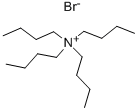

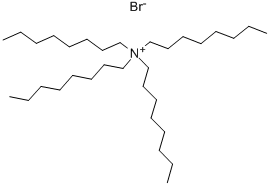


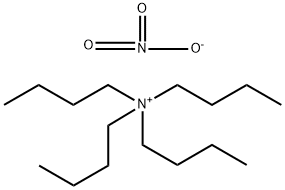

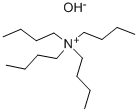
You may like
-
 Tetraheptylammonium Bromide CAS 4368-51-8View Details
Tetraheptylammonium Bromide CAS 4368-51-8View Details
4368-51-8 -
 Tetraheptylammonium bromide, ≥99% CAS 4368-51-8View Details
Tetraheptylammonium bromide, ≥99% CAS 4368-51-8View Details
4368-51-8 -
 Tetraheptylammonium bromide 98% (HPLC) CAS 4368-51-8View Details
Tetraheptylammonium bromide 98% (HPLC) CAS 4368-51-8View Details
4368-51-8 -
 Tetra heptyl ammonium bromide, for HPLC 99%+ CAS 4368-51-8View Details
Tetra heptyl ammonium bromide, for HPLC 99%+ CAS 4368-51-8View Details
4368-51-8 -
 Tetraheptylammonium bromide 96% CAS 4368-51-8View Details
Tetraheptylammonium bromide 96% CAS 4368-51-8View Details
4368-51-8 -
 Tetraheptylammonium Bromide CAS 4368-51-8View Details
Tetraheptylammonium Bromide CAS 4368-51-8View Details
4368-51-8 -
 Tetraheptylammonium Bromide (CAS Number: 4368-51-8)View Details
Tetraheptylammonium Bromide (CAS Number: 4368-51-8)View Details
4368-51-8 -
 4368-51-8 Tetra heptyl ammonium bromide 98+View Details
4368-51-8 Tetra heptyl ammonium bromide 98+View Details
4368-51-8
Statement: All products displayed on this website are only used for non medical purposes such as industrial applications or scientific research, and cannot be used for clinical diagnosis or treatment of humans or animals. They are not medicinal or edible.
